
Dharmaraja Ratha is one of 5 monuments that make up the complex Pancha Rathas in Mahabalipuram, on the Coromandel coast in the Bay of Bengal, state of Tamil Nadu, India. It is an example of a global importance monolithic architecture for the rarity of the site. Ranked in the Pallava period style Paramesvara King is therefore dated to the end of the seventh century.
Dharmaraja Ratha è uno dei 5 monumenti che compongono il complesso Pancha Rathas a Mahabalipuram, sulla costa di Coromandel nella baia del Bengala, stato del Tamil Nadu, India. Esso è un esempio di architettura monolitica di importanza mondiale per la rarità del sito. Classificato nello stile del periodo Pallava di re Paramesvara I è quindi databile alla fine del VII secolo.
All Pancha Rathas are aligned in north-south direction and are unprecedented in ‘Indian architecture and have become “models” for the construction of subsequent temples in the history of’ Dravidian architecture of South India. Tutti i Pancha Rathas sono allineati in direzione nord-sud e non hanno precedenti nell’architettura indiana e sono diventati “modelli” per la costruzione dei templi successivi nella storia dell’ architettura dravidica del sud India.
Probably designed as a temple – wagon (Ratha) (typical Indian architecture which reproduced a huge model wooden wagon still widespread in ritual processions). Probabilmente progettato come tempio-carro (Ratha). (Architettura tipica indiana che riproduceva un modello di enorme carro di legno ancora oggi diffuso nelle processioni rituali).
It’s defined wagon also because of the fact that, not being devoted to the cult, because never completed, it would be wrong to call it the temple. In fact, his fate was that of worship, so we can dare calling monolithic temple of the Pallava period Paramesvaravaram. Esso viene definito carro anche per via del fatto che, non essendo consacrato al culto, perchè mai completato, sarebbe erroneo definirlo tempio. Di fatto, il suo destino era quello del culto, per cui possiamo osare chiamandolo tempio monolitico del periodo di Paramesvaravaram I Pallava.
This Ratha is similar in design to Arjuna Ratha, but is larger in size; In fact, from the architectural point of view it is the most important of the five Rathas, highest and greatest. Questo Ratha è simile nel design all’ Arjuna Ratha , ma è più grande nelle dimensioni ; infatti dal punto di vista architettonico è il più importante dei cinque rathas, il più alto e più grande.
The Ratha faces west and is very rich plastically. Its roof is composed of three floors (tritalas). Il Ratha si affaccia ad ovest ed è plasticamente molto ricco. La sua copertuta è composto da tre piani (tritalas ).
The ground floor is a square and measuring 28 feet (8.5 m), with a height of 35 feet (11 m). It is open on all four sides and facades on all sides are supported by two central pillars, plus two large corner pillars in which the outside are carved niches with statues. Il piano terra è un quadrato che misura 28 piedi (8,5 m), con un’altezza di 35 piedi (11 m). È aperto sui quattro lati e le facciate su tutti i lati sono sostenute da due pilastri centrali, più due grandi pilastri angolari in cui all’esterno sono scolpite nicchie con statue.
It’s therefore a type of Vimana sândhara a square plan, with open verandas and a pyramidal tower with a shikhara (cuple) octagonal. Si tratta quindi di un Vimana di tipo sândhara a pianta quadrata, con verande aperte e una torre piramidale sormontata da un shikhara (Pinnacolo) ottagonale.
Very important is the structure of the small shrines that alternate on the tower, a model that, even taken in the most famous Shore Temple by the sea, shaping the structure of the Gopuram made in later centuries by the Chola and Vijayanagar Dynasties. Assai importante è la struttura dei piccoli santuari che si alternano sulla torre, un modello che, ripreso anche nel più famoso Shore Temple in riva al mare, preannuncia la struttura dei Gopuram realizzati nei secoli successivi dalle dinastie Chola e Vijayanagar.
The three Talas (plans) of the superstructure are practicable and form a circuambulatory almost complete. In other rathas the upper Talas are not fit for use, as is the case of most of the structural vimanas in Dravidian style, but here it’s assumed that internal stairs to access the upper floors were laid. I tre Talas ( piani ) della sovrastruttura sono praticabili e formano un circumambulatorio quasi completo. In altri rathas i Talas superiori non sono agibili, come è il caso della maggior parte dei vimânas strutturali in stile dravidico, ma qui si presuppone che fossero previste scale interne per accedere ai piani superiori.
The talas comprise balustrades consist of a cover salas – panjaras (small temple model with a rectangular base with elephant back roof). I talas sono composti da balaustre costituite da una copertura di salas – panjaras ( piccolo modello di tempietto a base rettangolare con tetto a schiena di elefante).
On the corners instead there are Kuta – panjaras (temples with a square base with noses in the center). The Kuta – Panjaras are introduced here for the first time, along with those on hara (the cover wall) of the second tala of Nakula Sahadeva ratha. Sugli angoli invece ci sono Kuta – panjaras ( tempietti a base quadrata con nasi in centro ). I Kuta – Panjaras sono introdotti qui per la prima volta, insieme a quelli sull’ hara ( parete della copertura ) del secondo tala del Nakula Sahadeva ratha.
The salas and kutas structures become panjaras for the presence in the central part of nasika / gavaksa / kudu (Horseshoe containing a human head) or chaitya arch, element derived from the Buddhist iconography. Le strutture di salas e kutas diventano panjaras per la presenza nella parte centrale di nasika /gavaksa / kudu ( ferro di cavallo contenenti una testa umana ) o arco chaitya , elemento derivato dall’iconografia Buddhista.
Another feature of this ratha is the ingenious telescopic cutting of the various architectural elements, which increase the prospective of all the coverage aspect. The decrease is so well balanced and aesthetically so perfect, that the superstructure of Dharmaraja has few peers in South India. Un’altra caratteristica di questo ratha è il geniale taglio telescopico dei vari elementi architettonici, che aumentano l’ aspetto prospettico di tutta la copertura. La diminuzione è così ben bilanciata ed esteticamente così perfetta, che la sovrastruttura della Dharmaraja ha pochi pari nel sud dell’India.
Many sculptures of this ratha are presented for the first time, so in Pallava art that in the history of South Indian architecture. Its three floors are full of carved icons, some of which resemble the figures of the facades of Buddhist cave temples. Molte sculture di questo ratha sono presentate per la prima volta, sia nell’arte Pallava che nella storia dell’ architettura indiana del sud. I suoi tre piani sono costellati di icone scolpite, alcune delle quali ricordano le figure delle facciate dei templi rupestri Buddhisti.
The flap (kapota) cover (prastara) of the ground floor presents on all sides your regular schedule of kudus (horseshoes) with a human face inside. La falda (kapota) della copertura (prastara) del piano terra presenta su tutti i lati lo schema abituale di kudus (ferri di cavallo) con un volto umano all’interno.
Under the frame of the west side there is a horizontal frieze formed by garlands and Ganas (dwarves). Sotto la cornice del lato ovest c’è un fregio orizzontale formato da ghirlande e Ganas (nani).
Interesting and unusual discharges are Pranala shaped monkeys and Bhutas (dwarfs), which were included in Kapota to drain rainwater. Interessanti e inusuali sono gli scarichi Pranala a forma di scimmie e bhutas ( nani ), che sono stati inseriti nella Kapota per drenare l’acqua piovana.
The first floor (tala) of the cover presents twenty niches decorated with Kankalamurti images, Vinadhara, dancing Shiva, Shiva and Ganesha, Gangadhara, Vishnu, Kalari, Vrsabhantikamurti, Andhakasurasamhamurti Krishna with women figurines, dvarpalas (guardians) and the temple priests. Il primo piano (tala) della copertura presenta venti nicchie decorate con le immagini di Kankalamurti, Vinadhara, Shiva danzante, Shiva con Ganesha, Gangadhara, Vishnu, Kalari, Vrsabhantikamurti, Andhakasurasamhamurti Krishna con figurine di donne, dvarpalas (guardiani) e sacerdoti del tempio.
In the second floor (tala) of the cover are dug some cells with the inputs supported by dvarpalas (guardians). Nel secondo piano (tala) della copertura sono scavate alcune celle con gli ingressi affiancati da dvarpalas ( guardiani).
The Griva (drum) octagonal brings a large and well-proportioned Visnucchanda sikhara (terminal dome) to smooth finish, That only a very skilled sculptor could perform. Il Griva ( tamburo ) ottagonale porta un grande e ben proporzionato Visnucchanda sikhara ( cupola terminale ) a finitura liscia, che solo uno scultore molto abile poteva eseguire.
A bhutamâla (band with figue of dwarves) is carved under the brim of sikhara. The Bhuta seem ethereal, clinging to the ceiling of the dome as if they are spirits with no weight on top of the cosmos. Un bhutamâla (fascia con figure di nani) è scolpito sotto la tesa del sikhara. I Bhùta sembrano eterei, aggrappati al soffitto della cupola come se fossero spiriti senza peso in cima al cosmo.
The mukhapattis and the sikhas (tails) of the eight mahanâsis (big noses) are decorated with taste. Sikhara This is by far the most beautiful and the most significant Dravidian architecture. I mukhapattis e i sikhas ( codini ) degli otto mahanâsis (grandi nasi) sono ornati con gusto. Questo sikhara è di gran lunga il più bello e il più significativo dell’architettura dravidica.
His stupi (plume) was carved into the rock in the corner of the basement, but, like other rathas, has not been sawn and positioned. Il suo stüpi (pennacchio) è stato scolpito nella roccia in un angolo del basamento, ma, come quello degli altri rathas, non è più stato segato e posizionato.
The temple, with its peripheral openings, was apparently intended to be a Shrine caturmukha (with 4 entrance and 4 faces) or Sarvatobhadra, with its main opening to the west. A structural scale had to be furnished to the west; the other three sides should have double stairs carved into the rock. Il tempio, con le sue aperture periferiche, è stato apparentemente destinato ad essere un Santuario caturmukha ( con 4 ingressi e 4 facce ) o Sarvatobhadra, con la sua apertura principale ad ovest. Una scala strutturale doveva essere fornita a ovest; gli altri tre lati avrebbero dovuto avere doppie scale scavate nella roccia.
The temple has a base (adhisthana) of Kapotabandha type, one of the first examples of this type. Il tempio presenta un basamento ( adhisthâna ) del tipo Kapotabandha, uno dei primi esempi di questo tipo.
The colonnaded openings on each side showing a pair of Sirirhapada-Visnukânta pillars flanked by Sirirhapâda-Brahmakânta pillars. Le aperture colonnate su ogni lato mostrano una coppia di pilastri Sirirhapada-Visnukânta fiancheggiati da pilastri Sirirhapâda-Brahmakânta.
The north and south sides of these models show incomplete pillars. I lati nord e sud mostrano modelli di questi pilastri ancora incompleti.
The Mukhamandapa is slightly projected in the west and has four columns Sirmapâda-Visnukânta. La mukhamandapa è leggermente proiettata ad ovest e ha quattro colonne Sirmapâda-Visnukânta.
On the ground floor, the north wall has two niches, in a is the figure of Brahma with four arms. Al piano terra, la parete nord ha due nicchie, in una si trova la figura di Brahma con quattro braccia.
The other niche has an icon of Harihara, combination of Hari (Vishnu) and Hara (Shiva) with four arms. L’altra nicchia ha un’icona di Harihara, combinazione di Hari (Vishnu ) e Hara ( Shiva ) con quattro braccia.
In the two niches in the east there are Ardhanarishvara, form of Shiva half male and half female. Nelle due nicchie ad est ci sono Ardhanarishvara, forma di Shiva metà maschile e metà femminile.
In the other niche is Skanda as Brahmasasta. Nell’altra nicchia si trova Skanda come Brahmasasta.
In the two niches in the south and west are four statues of Shiva standing in sambhaga posture, in the south have titles written up “Srimegha, the wealth cloud ‘and’ Trailokyavardhana, bestower of prosperity of the three worlds.”
Nelle due nicchie a sud e ovest ci sono quattro statue di Shiva in piedi in sambhaga postura, in quelle a sud hanno titoli scritti in alto “Srimegha , la nuvola di ricchezza” e ‘Trailokyavardhana, dispensatrice di prosperità dei tre mondi”.
Other icons are on the wall, one Pallava kings Narasimhavarman The Mamalla (photo internet). Altre icone sono sul muro, una è del re Pallava Narasimhavarman I Mamalla (photo internet).
Unfortunately, Dharmaraja Ratha remained partly unfinished, especially the crankcase with the scale, the pillars with lion at the base and all its inner part which was to be a deambultory with the central cell, the four entrances and stairs to the upper talas. Purtroppo il Ratha Dharmaraja è rimasto in parte incompiuto, soprattutto il basamento con la scala, i pilastri con leone alla base e tutta la sua parte interna che doveva risultare un deambultorio con la cella centrale, i quattro ingressi e le scale per salire ai talas superiori.
It is still a work of great architecture, in which architects and Pallava sculptors were able to instill harmony and equilibry. The pace of his Talas (plans) is demoted never been excelled and the wonderful sikhara is on top of it with such grace. Rimane comunque un’opera di grande architettura, in cui gli architetti e gli scultori Pallava hanno saputo infondere armonia ed eguilibrio. Il ritmo dei suoi Talas ( piani ) retrocessi non è mai stato così eccelso e il meraviglioso sikhara sta in cima ad esso con tanta grazia.
This is one of the greatest architectural monuments of the Pallava period. His strong appearance, combined with the high fineness of the sculptures, of perfect proportions and shapes of each component, generating a sense of architectural transcendence that goes far beyond its formal origins. E’ uno dei più grandi monumenti architettonici del periodo Pallava. Il suo forte aspetto , combinato con l’elevata finezza delle sculture, delle proporzioni perfette e delle forme di ogni componente, generano un senso di trascendenza architettonica che va ben oltre le sue origini formali.
© Questo sito web non ha scopo di lucro, non userà mai banner pubblicitari, si basa solo sul mio impegno personale e su alcuni reportage che mi donano gli amici, tutti i costi vivi sono a mio carico (spostamenti fra le città del territorio salentino e italiano, spese di gestione del sito e del dominio). Se lo avete apprezzato e ritenete di potermi dare una mano a produrre sempre nuovi reportage, mi farà piacere se acquisterete i miei romanzi (trovate i titoli a questa pagina). Tutto ciò che compare sul sito, soprattutto le immagini, non può essere usato in altri contesti che non abbiano altro scopo se non quello gratuito di diffusione di storia, arte e cultura. Come dice la Legge Franceschini, le immagini dei Beni Culturali possono essere divulgate, purché il contenitore non abbia fini commerciali. I diritti dei beni ecclesiastici sono delle varie parrocchie, e le foto presenti in questo sito sono sempre state scattate dopo permesso verbale, e in generale sono tutte marchiate col logo di questo sito unicamente per impedire che esse finiscano scaricate (come da me spesso scoperto) e utilizzate su altri siti o riviste a carattere commerciale. Per quanto riguarda le foto scattate in campagne e masserie abbandonate, se qualche proprietario ne riscontra qualcuna che ritiene di voler cancellare da questo blog (laddove non c’erano cartelli o muri che distinguessero terreno pubblico da quello privato, non ce ne siamo accorti) è pregato (come chiunque altro voglia segnalare rettifiche) di contattarci alla mail info@salentoacolory.it


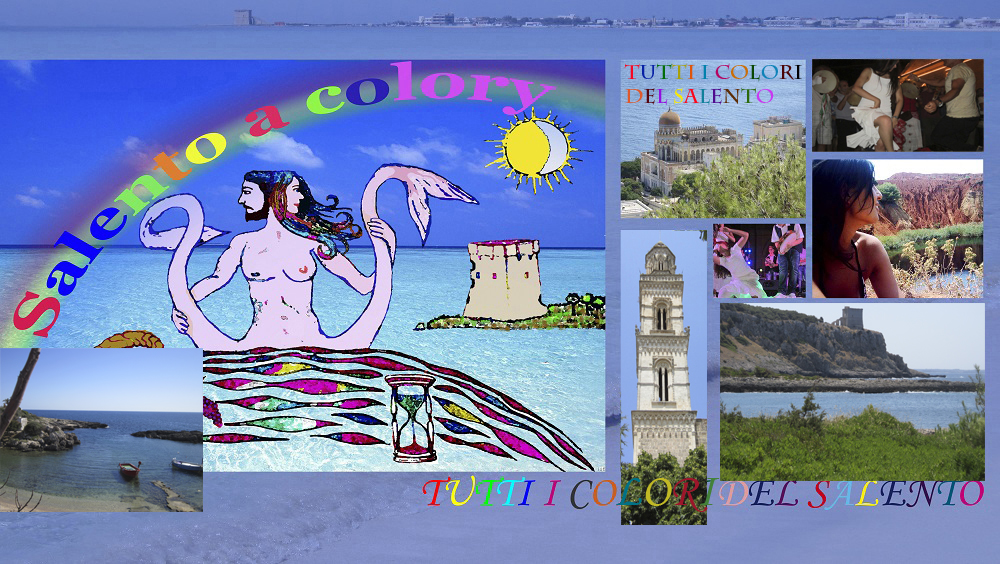

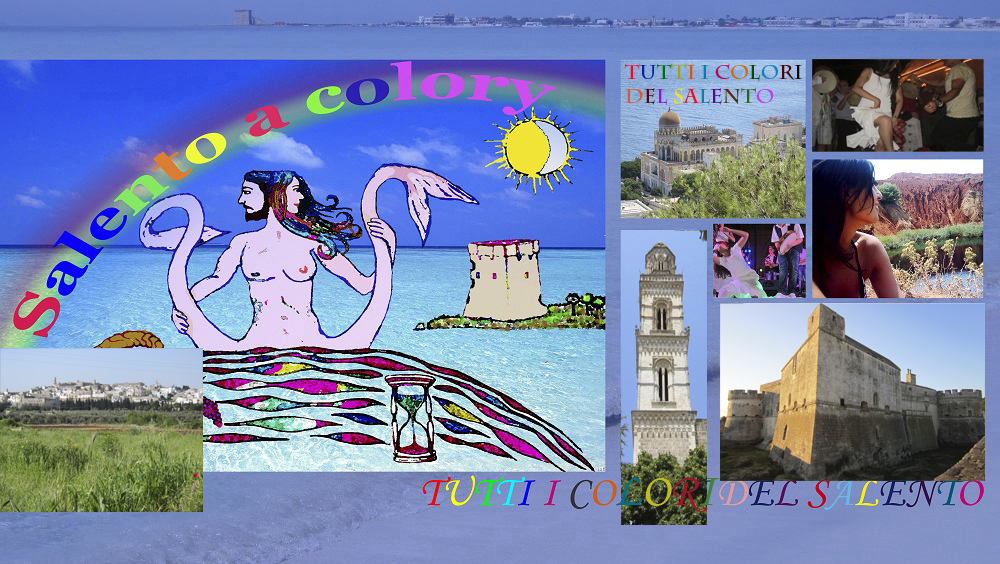

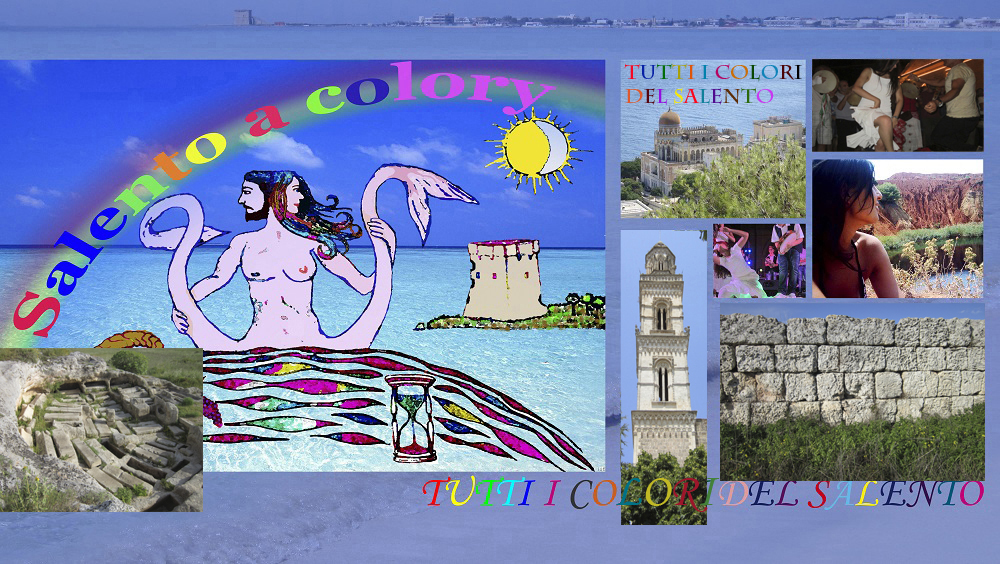

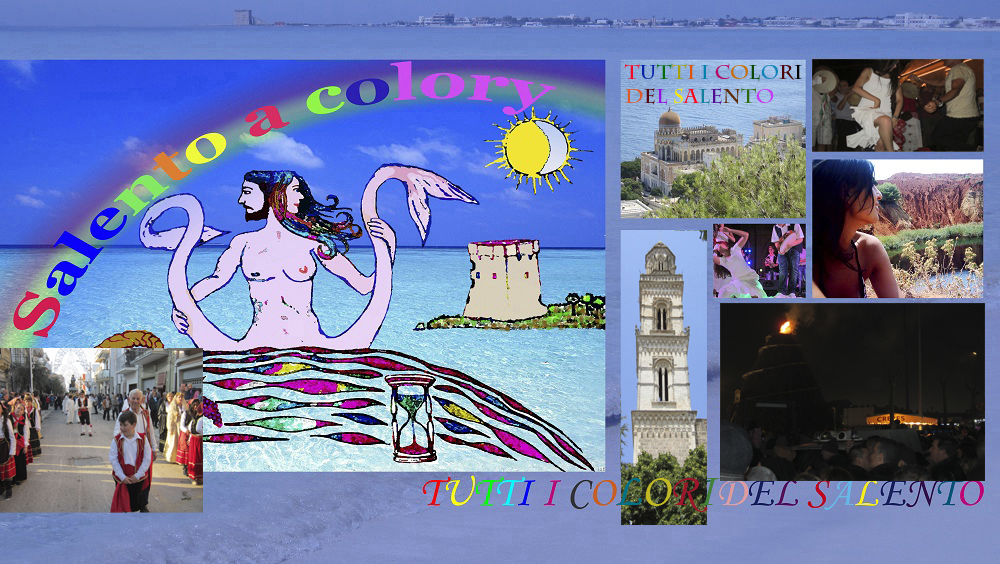

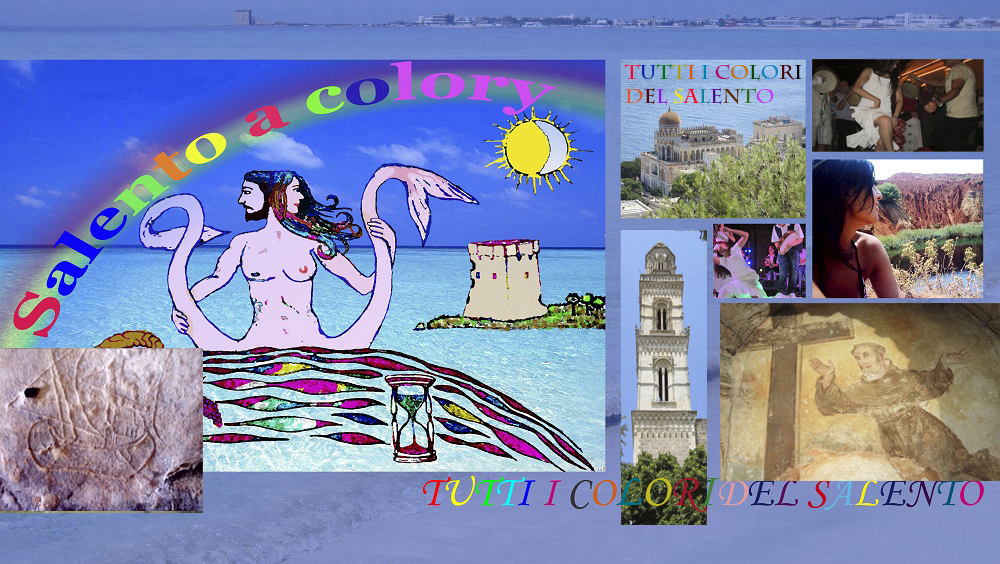
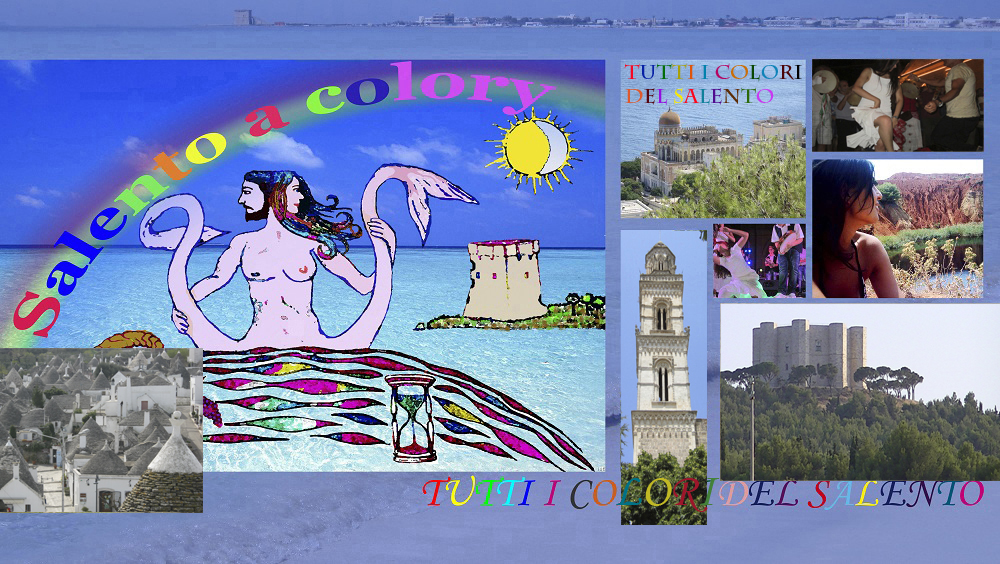


















































Leave a reply